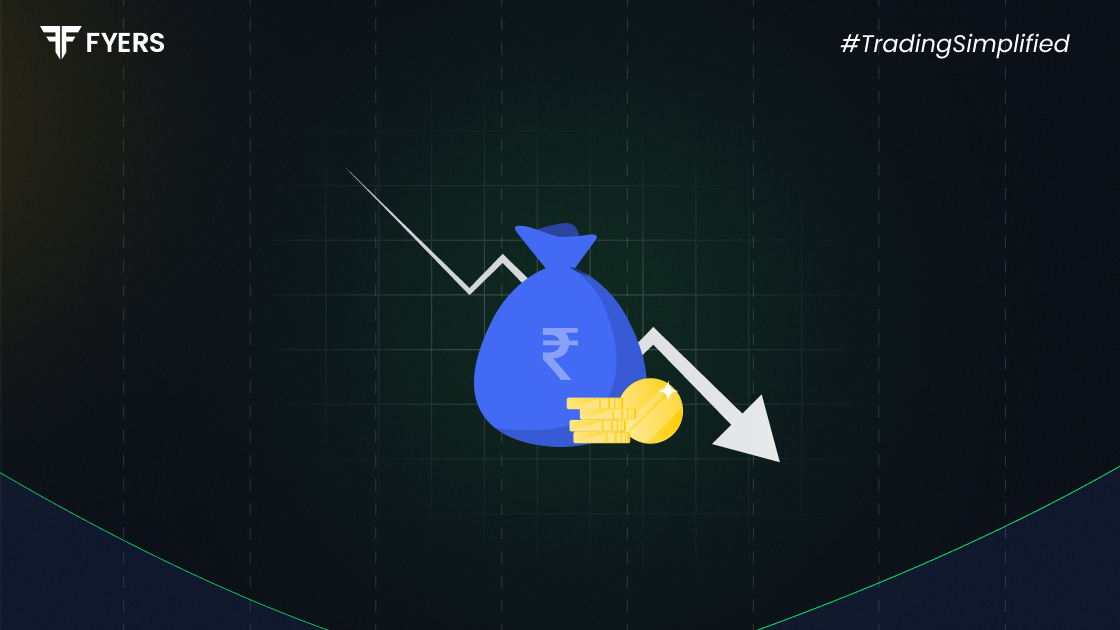

 22 Jul, 2025
22 Jul, 2025
 4 mins read
4 mins read

India’s fiscal landscape witnessed a major development when the Reserve Bank of India (RBI) announced a record ₹2.7 lakh crore dividend payout to the government for FY24. This windfall sparked significant debate: can such a one-time revenue boost meaningfully reduce India’s fiscal deficit?
The fiscal deficit has long been a critical indicator of India’s economic health. With increasing borrowing and global uncertainties, managing the gap between government spending and income is more vital than ever. This article breaks down the concept of fiscal deficit, explains how the RBI dividend fits into the picture, and explores its broader implications for public finance.
In simple terms, the fiscal deficit refers to the shortfall between the government’s total expenditure and its total revenue (excluding borrowings). When a government spends more than it earns through taxes and other revenues, it covers the gap by borrowing — creating a deficit.
A moderate fiscal deficit can help stimulate economic growth, especially in developing economies. However, persistently high deficits may lead to:
Increased public debt
Higher interest payments
Inflationary pressure
Reduced confidence among investors and credit rating agencies
Therefore, understanding what is fiscal deficit and managing it carefully is essential for economic stability.
The fiscal deficit formula is:
Fiscal Deficit = Total Expenditure – (Revenue Receipts + Non-Debt Capital Receipts)
Where:
Total expenditure includes both revenue and capital expenses.
Revenue receipts consist of tax revenues and non-tax revenues.
Non-debt capital receipts include recovery of loans and disinvestment proceeds.
This formula helps policymakers track the extent to which a government relies on borrowing to meet its expenses.
Public finance recognises multiple types of deficits, each offering different insights into fiscal health:
Revenue Deficit: Occurs when revenue expenditure exceeds revenue receipts. It indicates the government is borrowing even for routine expenses.
Fiscal Deficit: Reflects the total borrowing requirement of the government.
Primary Deficit: Fiscal deficit minus interest payments. It shows the deficit excluding past borrowings.
Effective Revenue Deficit: Revenue deficit minus grants for capital asset creation.
Understanding these types of deficit helps gauge where fiscal imbalances lie — whether in operational spending or capital investments.
In May 2024, the RBI announced a dividend of ₹2.7 lakh crore to the central government — more than double the previous year’s ₹87,416 crore. This payout was driven by:
Higher income from foreign exchange reserves
Stronger yields on investments
A revised economic capital framework, which allows RBI to transfer surplus after maintaining a buffer
This historic dividend gives the government a sudden cash inflow, providing room to either reduce borrowing or fund additional capital spending — potentially influencing the fiscal deficit for the year.
The central government had set a fiscal deficit target of 5.1% of GDP for FY25. With this windfall from the RBI, there’s speculation that the target could be met or even improved without additional borrowing.
Here’s how it helps:
Reduces borrowing needs: If the dividend is used to offset planned borrowing, it directly narrows the fiscal gap.
Supports capital spending: Alternatively, the funds could finance infrastructure projects, which boost growth without deepening the deficit.
However, while the dividend eases short-term fiscal pressures, it doesn't permanently solve the structural issues behind India’s deficit.
Despite the optimistic headlines, it's important to understand that the RBI dividend is a one-time boost, not a recurring income source. Relying on such windfalls poses risks:
No guarantee of repeat: The RBI may not deliver such high dividends every year, especially if global market conditions change.
No structural correction: The dividend doesn’t address long-term issues like tax base stagnation, inefficient subsidies, or revenue shortfalls.
Sustainable fiscal health requires reforms such as widening the tax base, rationalising expenditure, and improving the quality of spending — not just temporary revenue spikes.
India’s fiscal policy has to balance between growth stimulation and fiscal discipline. A high fiscal deficit may fuel economic activity in the short term but can also crowd out private investment and lead to macroeconomic instability.
Using windfall revenue like the RBI dividend wisely could help:
Meet deficit targets without cutting growth expenditure
Reduce reliance on market borrowings, thereby easing interest rate pressure
Maintain investor confidence, which is crucial for both domestic and foreign capital inflows
Still, the dividend alone cannot be the cornerstone of fiscal planning. It should complement broader efforts to manage deficits responsibly.
The RBI’s ₹2.7 lakh crore dividend has undoubtedly given the Indian government valuable breathing room to manage its fiscal position. In a year marked by global economic uncertainty and rising developmental needs, such a windfall can be strategically leveraged.
However, one-off revenues, no matter how large, cannot replace the need for fiscal reforms. Understanding the implications of fiscal deficit, maintaining transparency, and prioritising efficient public spending will be key to ensuring long-term fiscal sustainability.What is fiscal deficit in simple terms?
It’s the difference between the government’s total expenditure and its total revenue (excluding borrowings). It shows how much the government needs to borrow to meet its spending needs.
Fiscal Deficit = Total Expenditure – (Revenue Receipts + Non-Debt Capital Receipts)
A high fiscal deficit can lead to increased borrowing, higher interest payments, inflation, and reduced investor confidence. But in moderation, it can support growth during downturns.
No. Revenue deficit refers to the gap between revenue expenditure and revenue receipts. Fiscal deficit includes both revenue and capital expenditure minus total revenue and non-debt capital receipts.
Calculate your Net P&L after deducting all the charges like Tax, Brokerage, etc.
Find your required margin.
Calculate the average price you paid for a stock and determine your total cost.
Estimate your investment growth. Calculate potential returns on one-time investments.
Forecast your investment returns. Understand potential growth with regular contributions.